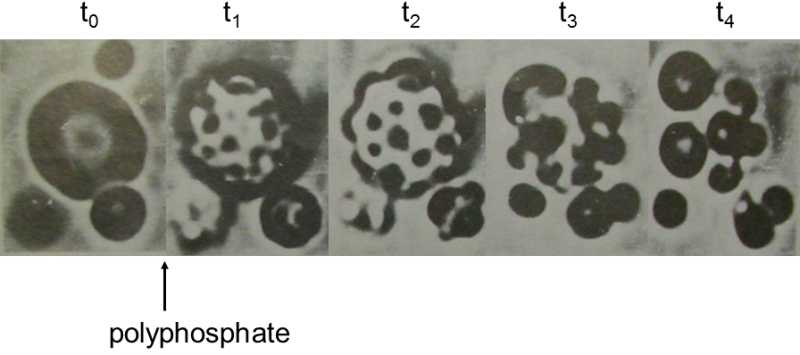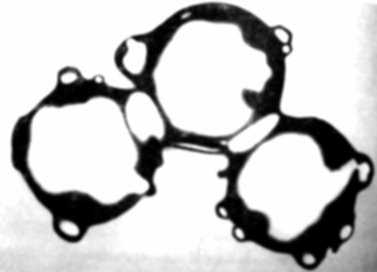X.3.1.1 Coacervates may exhibit growth and metabolism, but these are only analogies of the corresponding biological processes
Coacervateis a sort of primitive physical model of protocells (Oparin 1980; Miller, Schopf, & Lazcano 1997).Its most important property is the existence of a semi-permeable membrane that separates the inner and outer environment of the coacervate.Structures of the coacervate type are formed relatively easily in colloidal solutions with various chemical compositions through the effect of hydrophobic and hydrophilic interactions.If coacervates contain, in their interior, molecules exhibiting enzymatic activity (in experiments actual enzymes are used) and the medium contains the relevant substrate, for which the coacervate membrane is permeable, in contrast to the reaction products, then the reaction product must be gradually accumulated inside the coacervate.Water enters the interior of the coacervate through the effect of osmotic pressure until it becomes unstable and breaks and divides into a number of daughter coacervates.However, the basic problem is that the molecule with enzymatic activity is not reproduced during this cycle, so that these molecules gradually become more dilute during the division of coacervates.Thus, the cycle of growth and division of coacervates (Fig. X.2) is only a superficial analogy of the self-reproduction cycle of living organisms and it is not at all clear how a system capable of actual biological evolution could be developed on this basis.In addition, the coacervate hypothesis implicitly assumes the existence of a molecule with enzymatic activity but does not provide any idea about how these molecules could be formed.

Fig. X.2. Division of coacervates. Large coacervates formed from a mixture of protamine and polyadenine divide following addition of polyphosphate into a large number of smaller coacervates. In other systems, addition of a suitable substrate leads to an increase in the volume of the coacervates. Prior to the addition of polyadenine, i.e. at time t0, the diameter of the large coacervate was approximately 12 mm. According to Oparin and Gladilin (1980).

Fig. X.3. Microspheres. Hollow regular or irregular species are formed by dissolving or repeated dissolving and drying proteinoids. The shape and size of the species depend on the composition of the initial mixture of aminoacids and solvents. According to Sekerka (1980)
